
This article is an overview of the life of Thurgood Marshall. Access to this resource requires a free educator login.
- Subject:
- History
- Social Science
- Material Type:
- Reading
- Provider:
- Teach Democracy
- Date Added:
- 05/10/2024

This article is an overview of the life of Thurgood Marshall. Access to this resource requires a free educator login.

This video from Religion & Ethics Newsweekly features Timbuktu, one of the most remote and inaccessible places on the planet and a former thriving center of Islamic learning.

In this lesson, students are introduced to the three functions of government (legislative, judicial, and executive) through a story about an overworked king who must handle all the tasks of government. Next, students are given descriptions of the three functions of government and asked to match tasks to departments (lawmakers, executives, and judges). Finally, students create job descriptions for lawmakers, executives, and judges. Access to this resource requires a free educator login.

This video provides an overview of Carnegie, Rockefeller, and Labor Unions; horizontal and vertical integrations including criticisms of their practices.
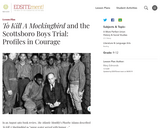
Students study select court transcripts and other elementary source materials from the second Scottsboro Boys Trial of 1933, a continuation of the first trial in which two young white women wrongfully accused nine African American teenagers of rape.
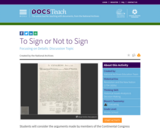
Students will consider the arguments made by members of the Continental Congress regarding whether or not to sign the Declaration of Independence. They will also have the opportunity to analyze each section of the Declaration to understand its meaning and consider the consequences of signing the document.
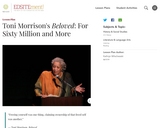
One of the most compelling novels of the twentieth century, Beloved by Toni Morrison has been read in classrooms across the country since its publication in 1987. The novel follows Sethe's escape to freedom, the murder of her child, and her difficult psychological journey as she copes with her past as a slave. As both an historical account of the experiences of slavery and an insightful novel about a supernatural ghost, this text is ideal for upper level high school students and students in AP programs.
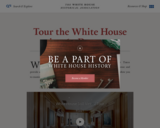
Welcome to the White House 360 Virtual Tour! This immersive experience will bring you inside the halls of the White House and provide access to all the public rooms on the Ground and State Floors. It will also allow you to examine the rooms and objects even closer than you would in person.
This feature was made possible in part by the National Endowment for the Humanities: Exploring the human endeavor.

In this Nearpod lesson, students will examine traditional homes and dwellings of various Native American groups throughout history. They will look at how environment and culture can shape our homes and dwellings, and explore and examine homes around the world.
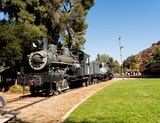
This is a single day lesson on the Transcontinental Railroad and the effects it had on Utah. This lesson is a hyperdoc and can be done in person or online. Cover image is publically licensed, credit to unsplash.com, by Oxana Melis.

This footage shows the Constitution of the United States and the Declaration of Independence as they are loaded into an armored truck at the Library of Congress, taken to the National Archives Building in a procession down Pennsylvania and Constitution Avenues, and carried up the building's steps. President Harry S. Truman and Supreme Court Chief Justice Fred M. Vinson speak in a ceremony at the National Archives Rotunda on the historic importance of the documents.
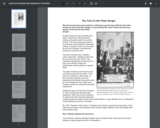
This trial in colonial times helped define freedom of press in America. Access to this resource requires a free educator login.
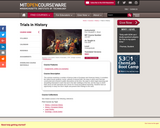
Examines a number of famous trials in European and American history. Considers the salient issues (political, social, cultural) of several trials, the ways in which each trial was constructed and covered in public discussion at the time, the ways in which legal reasoning and storytelling interacted in each trial and in later retellings of the trial, and the ways in which trials serve as both spectacle and a forum for moral and political reasoning. Students have an opportunity to study one trial in depth and present their findings to the class.

A video review of the causes of the Triangle Shirtwaist Factory fire and the ensuing reprecussions of the tragedy.

A video review of the Triangle Shirtwaist Factory with a first person testimony of a survivor of the fire.
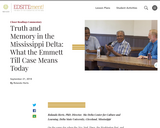
On the same day when the New York Times, the Washington Post, and other national media outlets announced the reopening of the Emmett Till case, 36 K-12 educators from across the country were gathered for a panel discussion in the Tallahatchie County Courthouse, where the Till murder trial took place in 1955.
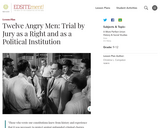
The classic American drama Twelve Angry Men can be used to frame discussion of the constitutional right and civic function of the trial by jury. The lesson explores the specific provisions associated with this right as well as the strengths and weaknesses of the system.
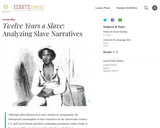
The corrupting influence of slavery on marriage and the family is a predominant theme in Solomon Northup's narrative Twelve Years a Slave. In this lesson, students are asked to identify and analyze narrative passages that provide evidence for how slavery undermined and perverted these social institutions. Northup collaborated with a white ghostwriter, David Wilson. Students will read the preface and identify and analyze statements Wilson makes to prove the narrative is true.
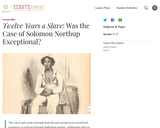
This lesson focuses on the slave narrative of Solomon Northup, a free black living in the North, who was kidnapped and sold into slavery in the Deep South. Slave narratives are autobiographies of former slaves that describe their experiences during enslavement, how they became free, and their lives in freedom. Because slave narratives treat the experience of one person, they raise questions about whether that individual's experiences exceptional.
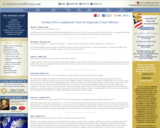
A list of 25 landmark cases in the history of the Supremem Court of the United States of America